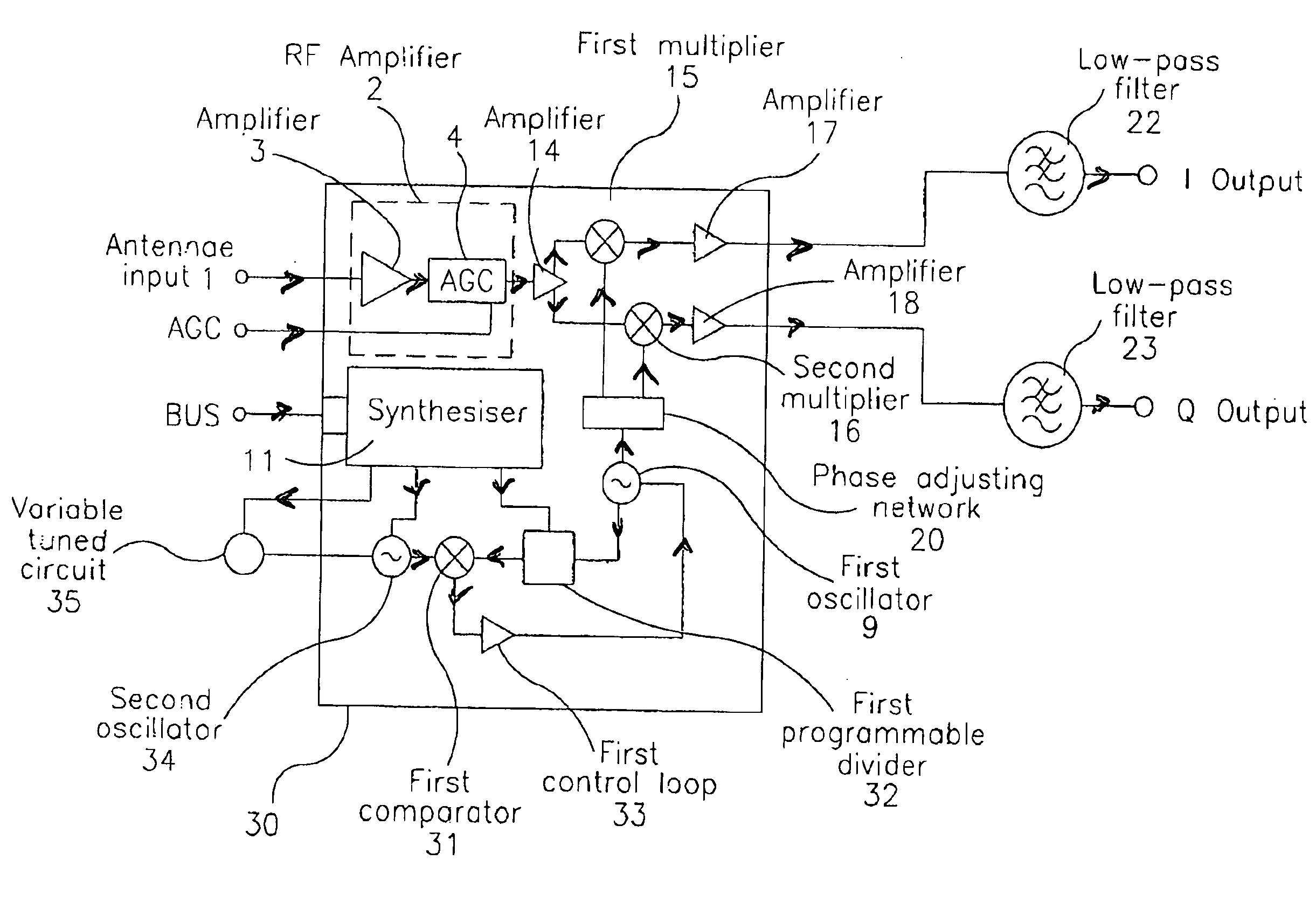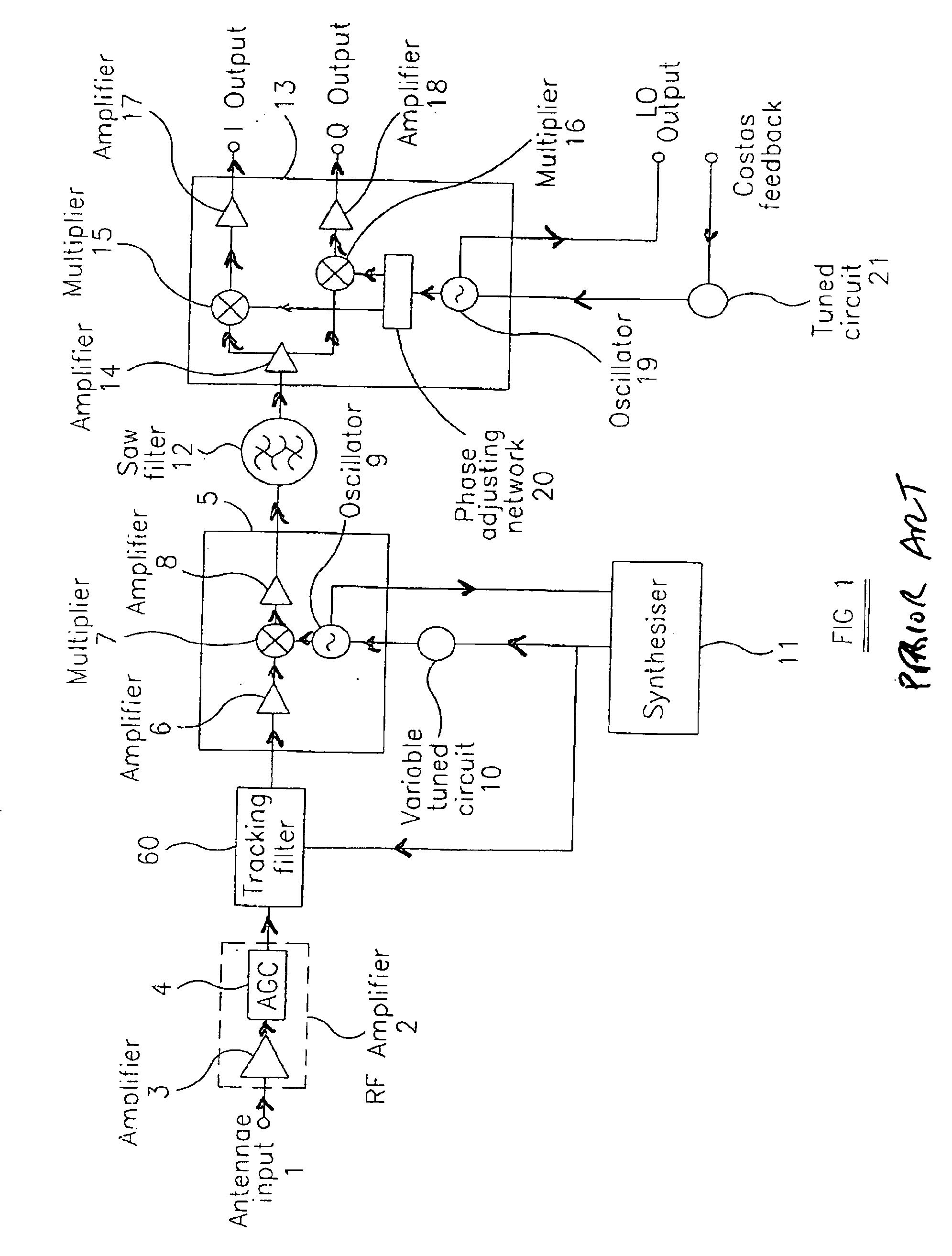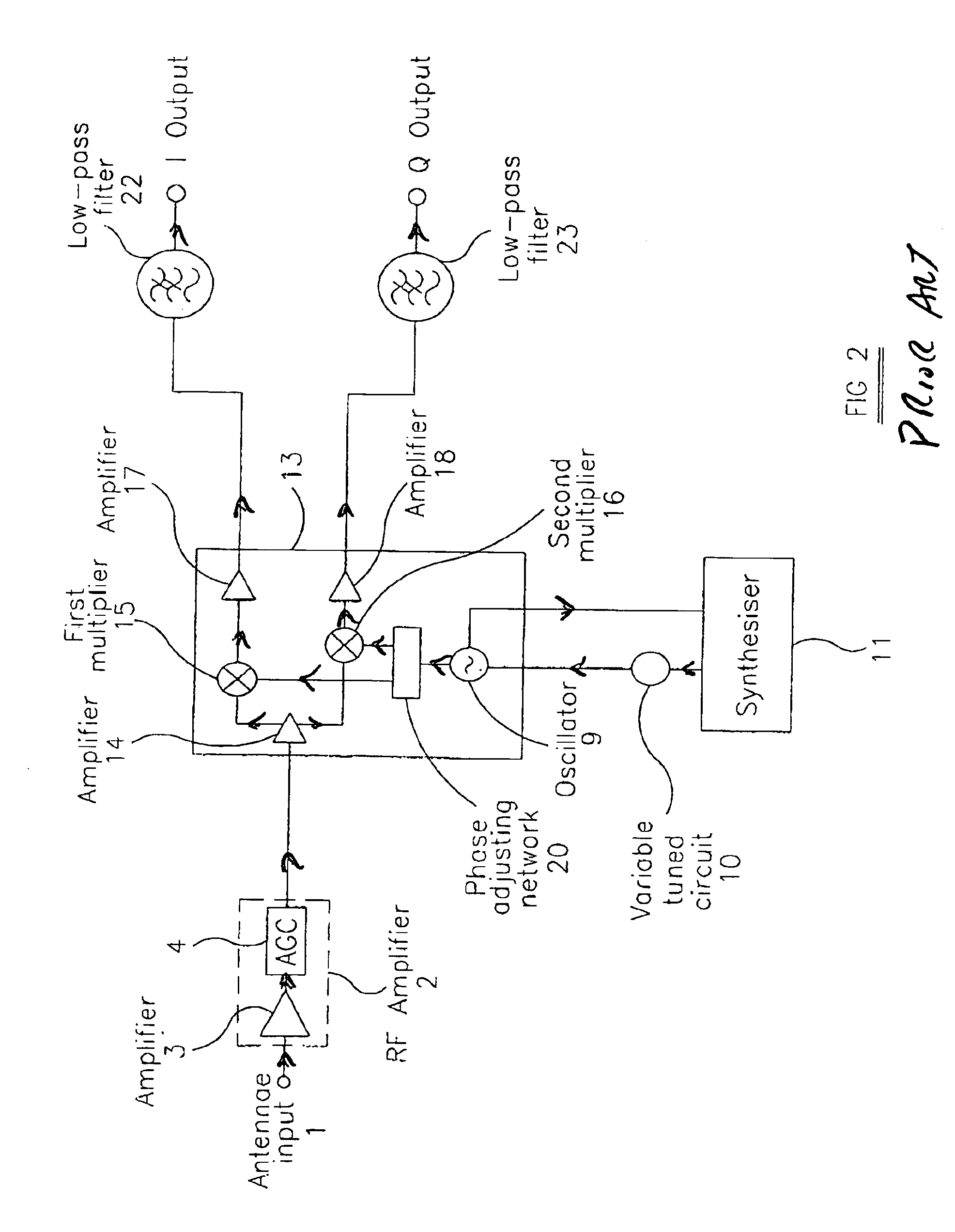Frequency changer and digital tuner
a digital tuner and frequency changer technology, applied in digital transmission, phase-modulated carrier systems, pulse automatic control, etc., can solve the problems of re-radiation of local oscillator signals, not being able to form all the main tuner circuitry in a single integrated circuit, and being difficult to achieve the effect of reducing the cost of manufacture, improving the performance of the tuner, and good phase noise performan
- Summary
- Abstract
- Description
- Claims
- Application Information
AI Technical Summary
Benefits of technology
Problems solved by technology
Method used
Image
Examples
Embodiment Construction
[0042]The digital tuner and frequency changer shown in FIG. 3 comprise a ZIF tuner for receiving and demodulating QPSK signals, for example in a DBS receiver system. The tuner receives input signals in an input frequency band which is typically from 950 to 2150 MHz. A plurality of channels are located within this input band, for example having centre frequencies which are equally spaced, for example at the Nyquist bandwidth.
[0043]The tuner effectively comprises a frequency changer in the form of a single monolithic integrated circuit 30 with very few external components. The frequency changer is of the ZIF type and is similar to that shown in FIG. 2. Accordingly, those elements and components of the tuner shown in FIG. 3 which are the same as the corresponding elements and components shown in FIG. 2 will not be described again in detail.
[0044]The frequency changer 30 includes the RF amplifier 2 within the integrated circuit and has an AGC input for receiving a control voltage from a...
PUM
 Login to View More
Login to View More Abstract
Description
Claims
Application Information
 Login to View More
Login to View More - R&D
- Intellectual Property
- Life Sciences
- Materials
- Tech Scout
- Unparalleled Data Quality
- Higher Quality Content
- 60% Fewer Hallucinations
Browse by: Latest US Patents, China's latest patents, Technical Efficacy Thesaurus, Application Domain, Technology Topic, Popular Technical Reports.
© 2025 PatSnap. All rights reserved.Legal|Privacy policy|Modern Slavery Act Transparency Statement|Sitemap|About US| Contact US: help@patsnap.com



